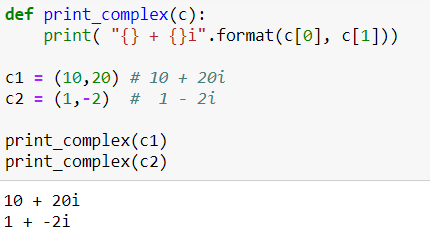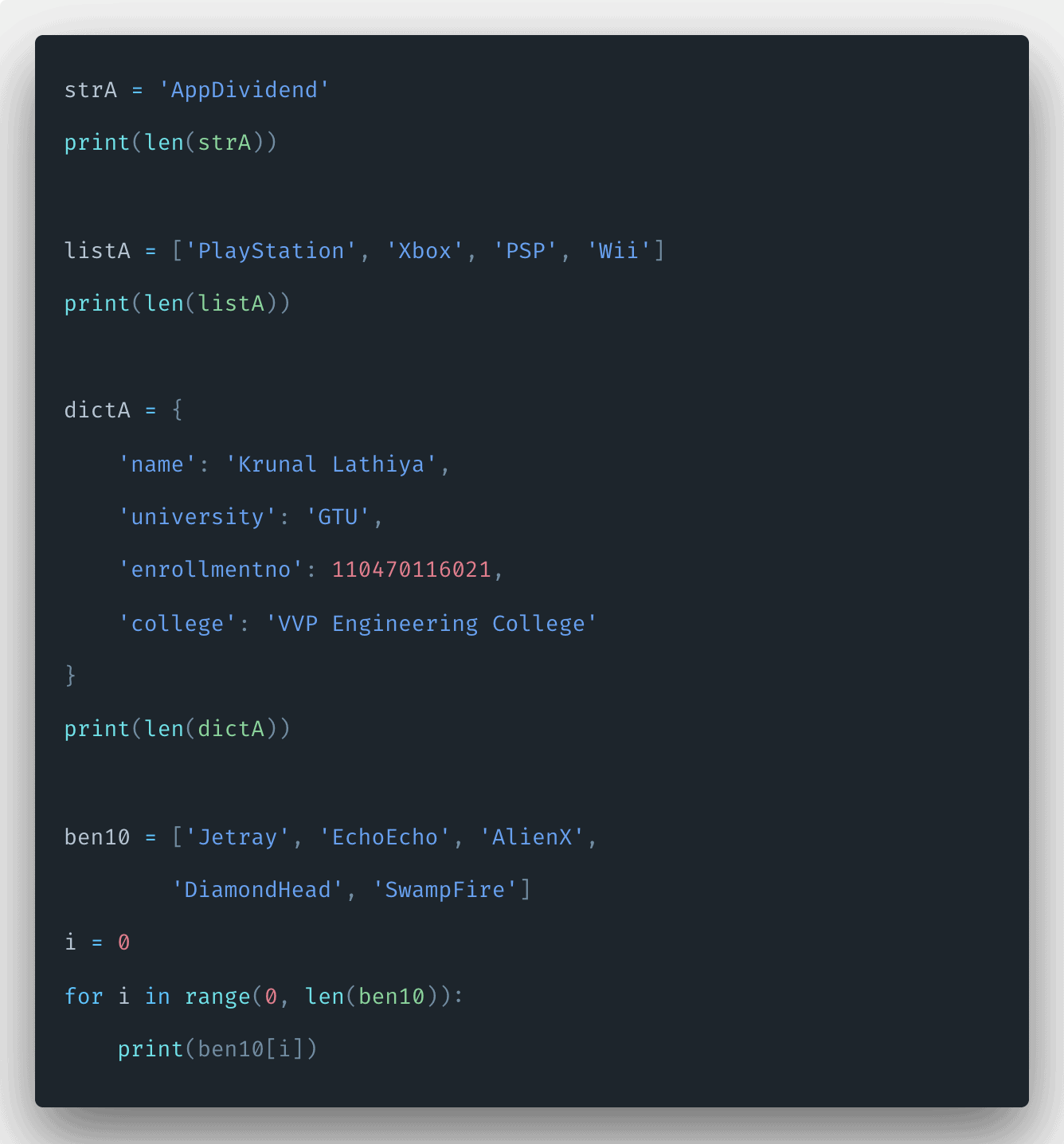
TypeError: 'float' object cannot be interpreted as an integer

TypeError Traceback (most recent call last) Only integer values can be specified as the start, stop and step arguments. The range function does not work with floats. Print(i) Range Objects with Float Numbers
#For i in range python code
Note that nothing is printed when we run the code below, because if we start and 17 and count up, we can never reach the specified end argument of 10: # What if no numbers are in range? Note that if you’re using a step argument with range, it cannot be zero (this would cause an infinite loop and thus throws a ValueError).Īdditionally, if counting up from your start argument won’t ever reach your end argument, range won’t return anything. We can also define a negative step function to generate numbers in decreasing order, rather than use the reversed function. Range can be used to generate negative numbers. We can reverse a range object too, using the same reversed() function that is applicable for lists. This returns a new range object! range(5) range(0, 3) Like lists, we can also slice a range object. Interestingly, we can access items in a range object through its index, just like we would with a list. print(range(5)) range(0, 5) Range Objects: Advanced Use The numbers are generated only when they’re actually being used in some way (like being called in the print function as we have above). Note that the numbers are still not generated - this is due to the memory saving “lazy evaluation” mentioned earlier. The default print method of the class prints the range of numbers that the range object will iterate through. Let’s check the type of object returned by the range function. In this third way of declaring range, we begin with the start number and then count up by three (the step number) until we reach our stop number. Note that the start number is included in the range, whereas the stop number is not. The simple example above used the first way of declaring the range function. range(start, stop, step): This creates a range of numbers from the start number to a number less than the stop number, incrementing by step.range(start, stop): This creates a range of numbers from the start number to one less than the stop number, incrementing by one.range(stop): This creates a range of numbers from zero to one less than the stop number, incrementing by one.We can illustrate these three as follows: There are three arguments we can use with range: start, stop, and step. We will revisit the scope of range shortly. The basic use of range is, therefore, to loop through a list of numbers. Notice that the five was not included in the loop. The snippet above loops through the numbers zero to four. Let us print the first five whole numbers. Let us first look at a basic use of for loops and the range function in Python. In this tutorial, we’re working with the range function of Python 3, so it doesn’t have the performance issues once associated with range in Python 2. The xrange function from Python 2 was renamed range in Python 3 and range from Python 2 was deprecated. The xrange function in Python 2 returned items through lazy evaluation, meaning that numbers were generated only when required, which used less memory. This process, thus, occupied a significant chunk of memory for large list sizes. The range function in Python 2 generated a list of numbers that you could iterate through. This tutorial focuses on Python 3, but if you’ve worked with Python 2 before some explanation is needed because the meaning of range changed between these two versions. If you’ve never worked with Python before, we’d recommend starting with this interactive Python fundamentals course first. Although range is useful for a broad variety of Python programming tasks, this guide will conclude with a couple of data science use cases for the range function.įor the purposes of this tutorial, we do assume you have at least some knowledge of Python syntax. In this detailed guide, we will walk you through the workings of the range function using examples, and discuss its limitations and their workarounds. In Python, an important component of loops is the built-in range function.

Looping is an integral part of any programming language.

OctoPython Range Tutorial: Learn to Use This Helpful Built-In Function


 0 kommentar(er)
0 kommentar(er)
